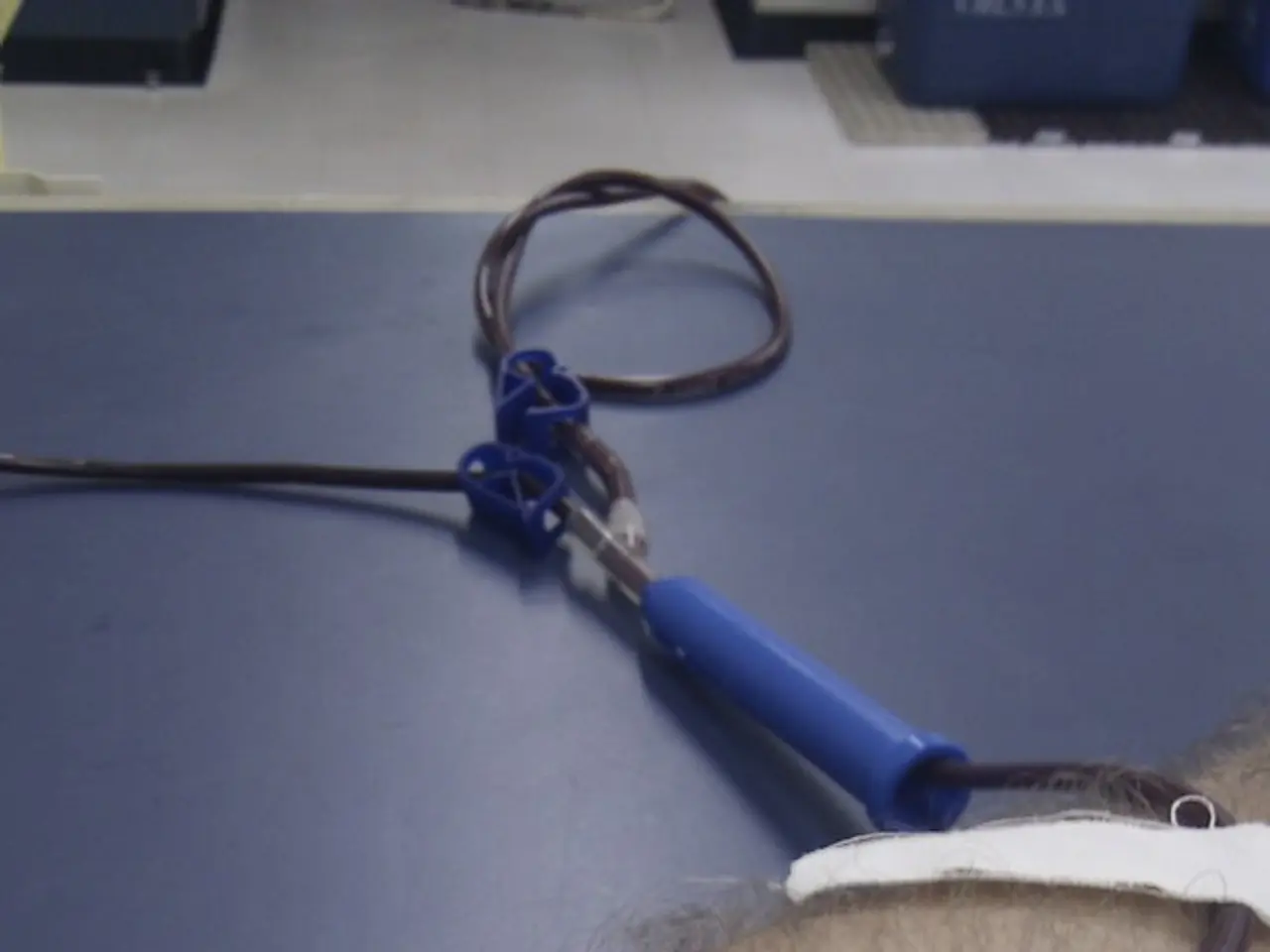Arm Blood Clot: Recognizing Symptoms, Potential Dangers, Origins, and Remedies
In the United States, an estimated 300,000 individuals are affected by Deep Vein Thrombosis (DVT) each year, with cases in the arm being less common but still significant [1][3][5]. This article aims to shed light on the symptoms, causes, treatment options, and risk factors associated with DVT in the arm.
**Symptoms of DVT in the Arm**
The signs of DVT in the arm can be alarming, with symptoms such as sudden swelling, pain or tenderness, warmth, redness or discoloration, and possible heaviness or discomfort in the affected arm. Skin may also feel warm to the touch [1][3][5]. These symptoms can resemble other conditions, but prompt medical evaluation is crucial, especially if symptoms are sudden or severe.
**Causes and Risk Factors**
DVT in the arm is often caused by blood flow stagnation or poor circulation in the arm veins, injury or trauma to the arm veins, or the use of central venous catheters or pacemakers. Other risk factors include repetitive arm motions, certain medical conditions, hospitalization, and cancer or tumors that compress veins [1][3][5].
**Treatment Options**
Treatment for DVT in the arm primarily involves anticoagulants to prevent clot extension and reduce the risk of pulmonary embolism. Depending on the severity of the clot, clot-busting medications may be used, compression therapy may be employed, and underlying causes addressed. Surgical options such as thrombectomy or vein bypass may be considered in rare cases [1][3][5].
**Prevention and Continued Care**
Following treatment, continued therapy, such as blood thinners and compression, may be necessary to prevent further clots from forming. Smoking, obesity, diabetes, high blood pressure, birth control pill use, being over 60 years old, having a family history of blood clots, and the inability to move much are other factors that increase a person's risk of developing a blood clot in their arm [1][3][5].
It is crucial to remember that a blood clot in the arm can be dangerous as it might break loose and travel to the lungs, causing a life-threatening situation. Prompt medical attention is essential to reduce the risk of serious complications such as pulmonary embolism [1][5].
In summary, DVT in the arm presents with swelling, pain, warmth, and discoloration due to clot formation, commonly caused by impaired blood flow or vein injury. Treatment primarily involves anticoagulants and addressing underlying risk factors to prevent clot progression and serious complications [1][3][5].
References: [1] National Heart, Lung, and Blood Institute. (2021). Deep Vein Thrombosis (DVT). Retrieved from
- The topic of predictive science in medical-health and wellness is crucial in understanding risk factors associated with conditions like Deep Vein Thrombosis (DVT), such as multiple medical conditions like obesity, diabetes, and cardiovascular health.
- Type-2 Pulmonary Thromboembolism (PTE), a potentially life-threatening complication of DVT, can be predicted by the presence of multiple medical conditions like COPD, asthma, or nsclc.
- Depression, a common mental health issue, can be a risk factor for DVT, given its association with obesity, diabetes, and cardiovascular health.
- Medical-conditions like multiple sclerosis, known to impact the immune system, may also indirectly contribute to the risk of developing DVT.
- In the realm of health-and-wellness, addressing and managing conditions like obesity, diabetes, and depression can help reduce the risk of developing DVT or experiencing its complications.
- Proper cardiovascular health can play a role in preventing DVT, as heart conditions can sometimes lead to impaired blood flow, increasing the risk of developing the condition.
- The use of central venous catheters or pacemakers, medical devices that may cause trauma to arm veins, is another factor that could be predictive of DVT in the arm.




